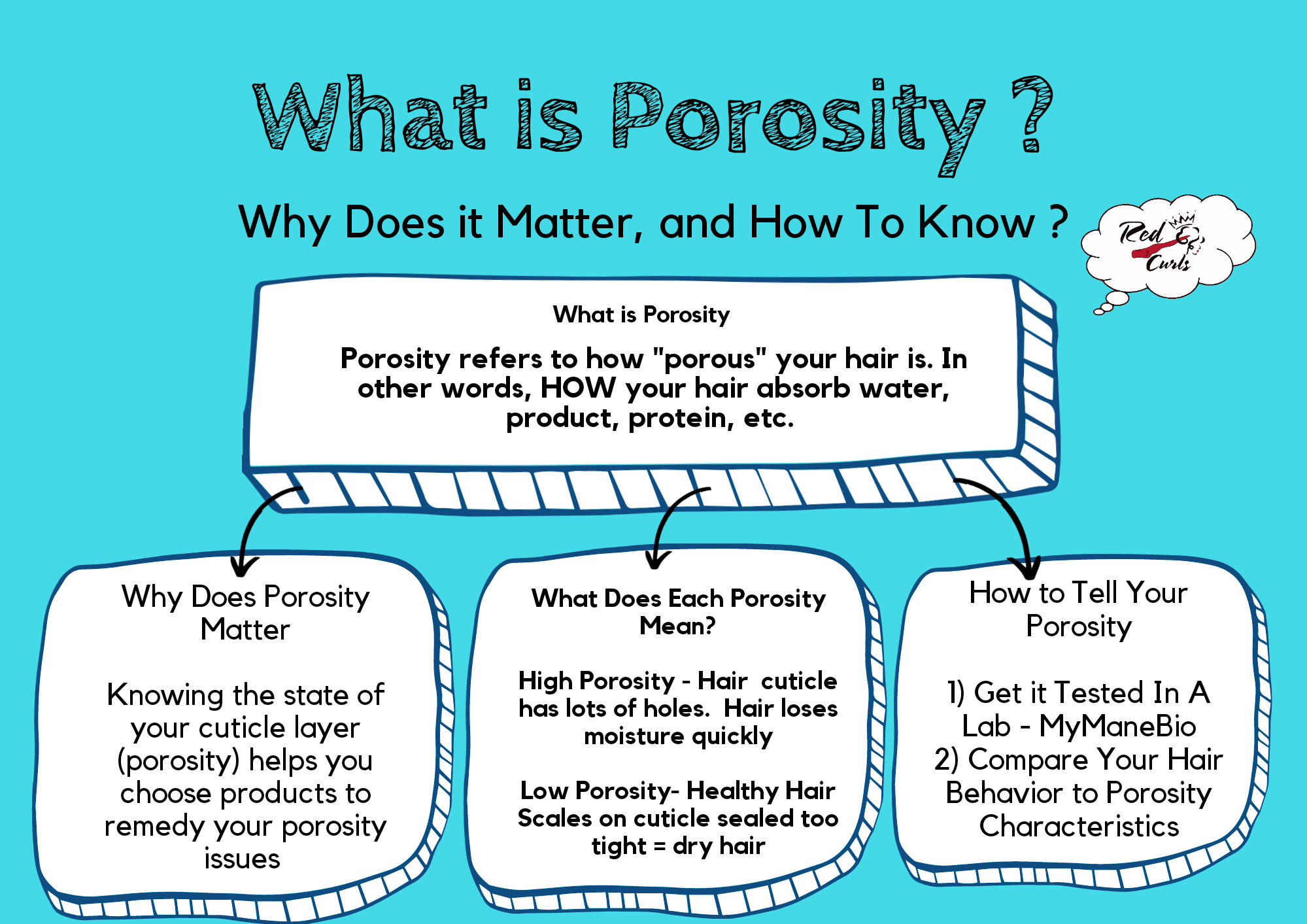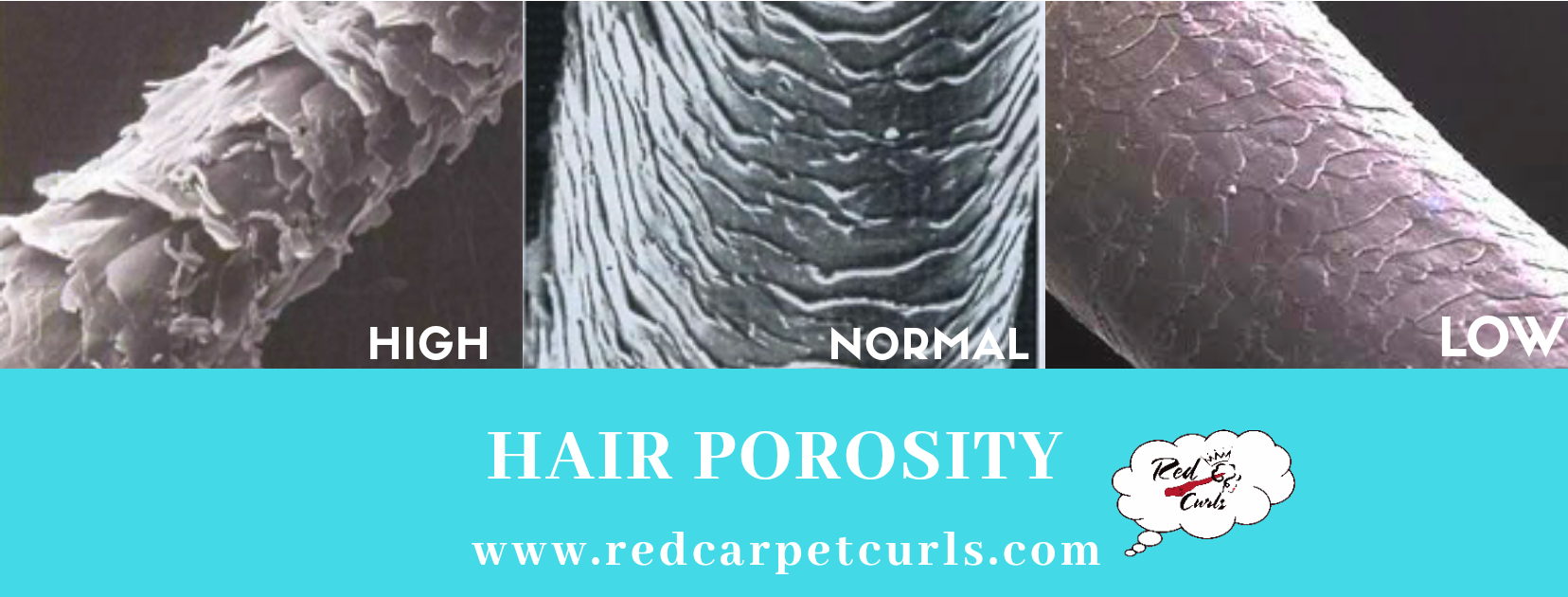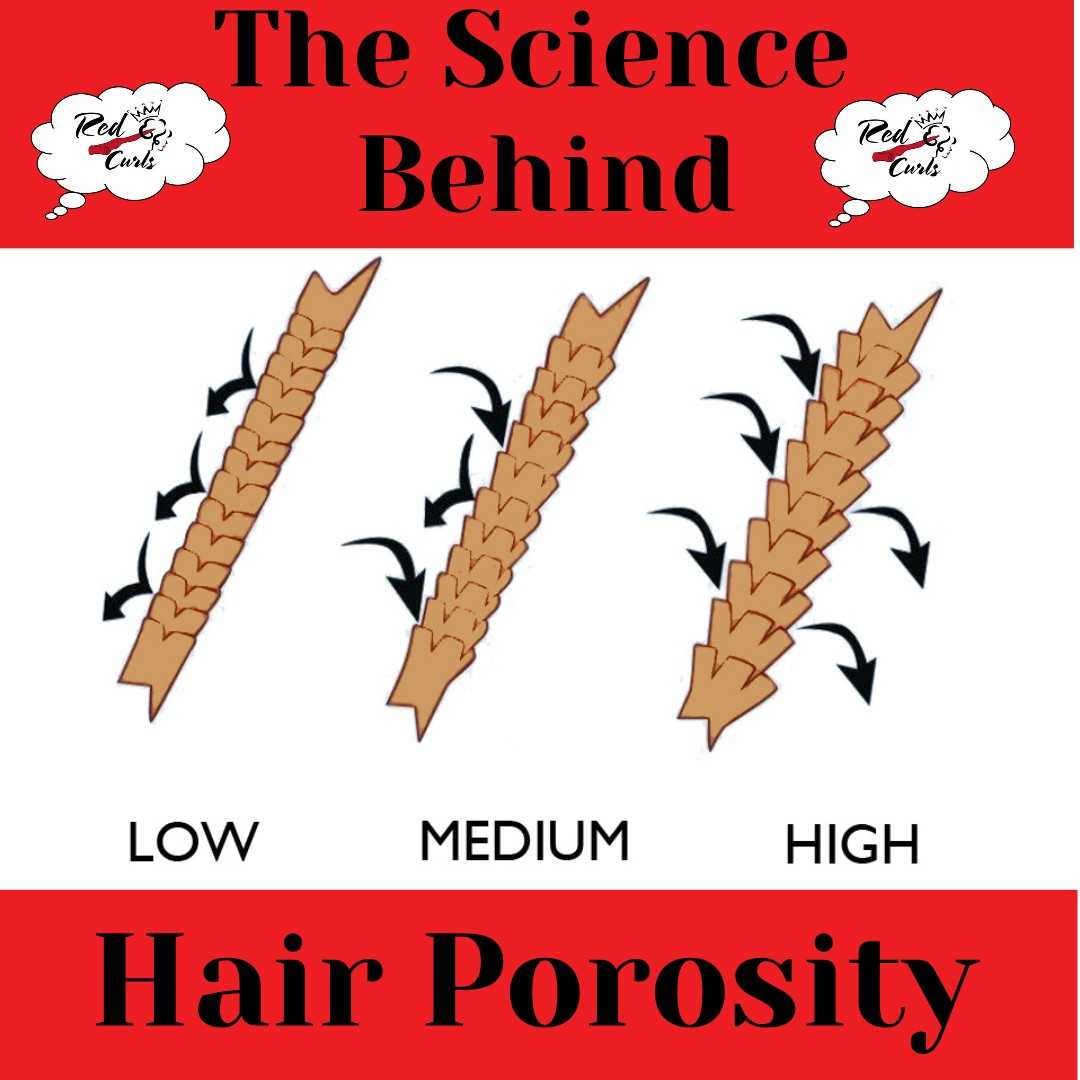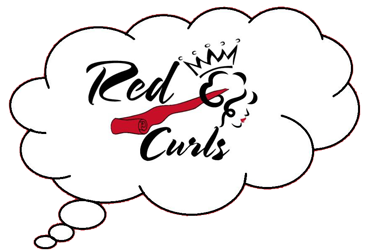What is Hair Porosity? 
Hair Porosity refers to the state of the cuticle layer of your hair. How this layer absorbs and retains moisture.
The “state” of your cuticle will tell you how your hair behaves. Your cuticle is the outermost layer of your hair responsible for creating a protective barrier for the hair.
The cuticle contains overlapping dead cells that look like shingles on a roof. A healthy cuticle layer is smooth and shiny. All the scales are laid down perfectly flat, which helps retain any moisture in the hair strand for longer periods of time.
If your hair is damaged, the cuticle layer will contain many holes or gaps. Resulting in much-needed moisture to “Leak out” through those holes.
Why Does Knowing Your Porosity Matter? 
Understanding how your behaves will be the key to achieving beautiful definition without breaking the bank!
High Porosity – Damaged Hair, this means you have many gaps, holes, or tears in the cuticle layer. This makes it impossible for the scales on the cuticle to seal properly and retain much-needed moisture and chemical treatment such as hair color. The result is often:
- Dry/Brittle Hair
- Frizzy/Undefined Hair
- Dull
- Split Ends/Breakage
- Hair Color Fades Quicker
High Porosity hair may require a little extra TLC by deep conditioning more often (2x a week). High porosity hair tends to do better with heavier ingredients like oil and butter to help create an artificial seal or barrier until your cuticle layer repairs all the holes and gaps.
Low Porosity Hair– Typically healthy hair. The biggest challenge with low porosity hair is being able to effectively moisturize the hair. That is because the cuticle of Low Porosity hair works a little differently, the scales do not lift on their own to allow moisture, products, etc to effectively penetrate. When healthy, this means most LP hair is very shiny. But over time, if no moisture is getting inside of the hair strands, the hair becomes:
- Dry
- Brittle
- Dull
- Prone to Split Ends & Breakage
You may be prone to split ends and breakage. Low porosity hair should use indirect heating caps like the Thermal Haircare Hot Head to heat up your deep conditioning/protein treatments. The indirect heat from the cap helps gently lift the scales on the cuticle to allow moisture to effectively penetrate the strands. Stay away from heavier ingredients like butter, since LP hair can seal “too well” it doesn’t need heavy ingredients, this will cause build-up and frizz. Light moisture is key.
Understanding how your hair accepts and retains moisture helps you pick your product ingredients more carefully. Hair products are meant to supplement the moisture our naturally textured hair lacks. It is not meant to be complicated or executive. It’s meant to be all-natural and simple.
Can Porosity Change? If So, How?
 Yes, porosity can absolutely change. Porosity is dictated by many factors including your genetics, but the most important factor is the amount of damage sustains to cause the porosity issues.
Yes, porosity can absolutely change. Porosity is dictated by many factors including your genetics, but the most important factor is the amount of damage sustains to cause the porosity issues.
According to an article in the Journal of Investigative Dermatology Symposium Proceedings, an increase in porosity is called the weathering of hair. “Weathering is the progressive degeneration from the root to the tip f the hair cuticle and then later the cortex due to routine every day were and tear. Long hair is especially susceptible to weathering. Features of watering include damaged cuticles, split ends, and eventually breakage. An increase in damage to the cuticle (I.E. causing high porosity) is caused by many factors such as:
- Natural watering of air (mechanical brushing such as tight buns, brushes, combs, etc)
- Genetics
- Stress
- Age
- Exposure to your environment
- Excessive shampooing or other potentially harmful hair care practices
You can always damage hair with thermal heating such as straightening the hair, yet one of the most common practices is bleaching. The bleach (very strong chemical treatment) oxidizes (breaks down) the existing melanin (hair pigment) in the cortex (innermost layer) of the hair. Darker hair requires longer bleaching times. Red hair is more difficult to bleach than brown hair. The oxidation reaction destroys the disulfide (strongest bonds in your hair, gives your hair the structure to curl) within the keratin and can damage the cuticle making even more porous (full of holes).
According to a 2008 article found in the Journal of Cosmetic Science, “chemical damage (oxidative bleach) nearly TRIPLES the hair surface area in the first minute, of bleaching due to the increase in the number of pores followed by a sudden drop after ten minutes of bleaching from smaller pores breaking down into larger ones.”
The more damage you expose your hair to the longer it takes to heal and get to the level you want. If you follow the Curly Girl Method, you will do away with all the harmful factors responsible for damage such as thermal heat, chemical treatments, and bad ingredients. The more care you give it such as weekly gentle protein treatments, the healthier it will look.
If your hair started out very damaged and high porosity, you can possibly get it to ideal porosity, but not low porosity as LP is often determined by your genetics.
If your hair started out LP, it means it’s already healthy, just dehydrated, you can learn more effective care practices but you will remain low porosity.
Tips to Improve Porosity
Your porosity dictates HOW you moisturize your hair and possibly seal it if your hair is damaged and unable to do so on its own. If you are just starting out, struggling with your routine, or even wondering how to figure out your own hair porosity, you can find those answers in the embedded YouTube video above.
- Check out of 7 Tips for High Porosity Hair article, by clicking here.
- Check out our 7 Tips for Low Porosity Hair article, by clicking here.

